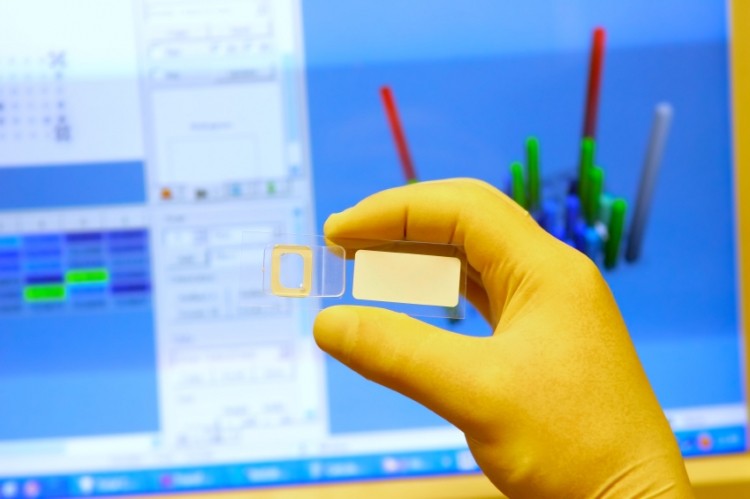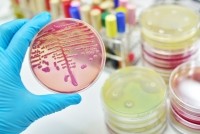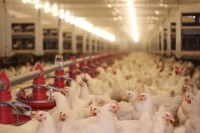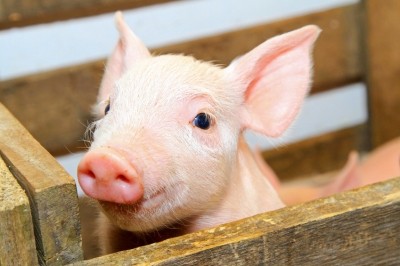Special Edition: Gut Health
Butyrate, botanicals and yeast cell walls – how can they be made more effective?

Tim Goossens, business development manager, at Belgium company, Nutriad, told us:
“It is still a bit of a mystery, to a certain extent, how these additives work. But if we rely on the science, and continue to glean more insights, then we increase our chances of optimizing such ingredients to further support the animal’s gut health and overall performance.
“What product developers can do is keep track of new studies into mode of action, but also go beyond the sanitary conditions of the lab, test additives in the field, and look at features of the digestive tract.”
Distorting bacterial communication
In terms of R&D approaches regarding botanicals in feed, he said compounds that are able to disrupt quorum sensing (QS) signals are gaining traction in the industry shift away from antibiotics.
Goossens said there is also a low chance of bacteria developing resistance against these molecules.
Nutriad, he said, has been carrying out research into QS for the past few years, working with academic institutions to test for compounds that inhibit such signaling at very low concentrations, but not with the objective of targeting pathogenic bacteria directly.
“Botanicals are complex as they have many active ingredients. But, in selecting compounds for our QS research, we were able to leverage the work done by our UK colleagues in terms of palatability enhancement using such ingredients so we knew which plant extracts improved feed intake.
“Then we narrowed it down to which ones had an antibacterial effect and we ran tests on their antioxidant capacity as well.
Quorum sensing (QS)
Quorum sensing is a form of bacterial communication based on the production and secretion of signaling molecules that can be detected by adjacent bacteria.
When population density rises, these molecules accumulate in the extracellular environment, thereby providing a means for bacteria to quantitatively monitor the presence of other bacteria.
When these signaling molecules reach a certain threshold concentration, they initiate intrabacterial signaling that culminates in the activation of specific genes.
“The funnel got narrower again as we subsequently evaluated the compounds to see which ones improved digestive performance," he said.
Then Nutriad ran in vitro trials on those selected compounds, in collaboration with academia, relying on a green fluorescent protein marker, to measure the intensity of QS signaling. Goossens said the results indicated a mixture of the compounds remain biologically active at low inclusive levels and can block QS.
“There is good reason to believe QS is effective in such a way in the gut of animals. But it must be remembered that botanicals are complex. So we have to interpret our results carefully,” he added.
Pathogenic toxicity
He said much of the wider research focus on microbial activity reflects pathogenic toxicity, as the bugs that make people sick are well characterized.

But, said Goossens, there is a need for more inquiry into QS in less hostile environments as well.
And, knowing the diluted concentrations at which feed additives arrive within the intestinal tract of livestock, future research efforts need to focus on QS relevance for bacterial activity inhibition directly in farmed animals. “Investment in PhD research is needed in this respect,” he said.
But QS distortion is just one tool. Goossens has also been examining the mode of action of both butyrate products and yeast cell walls.
Slow release
“Butyrate is a simple molecule but it can do many things. However, it is a complicated story; its functionality depends on where it ends up in the gastrointestinal tract of the animal,” said Goossens.
Butyrate products are said to have an effect on several levels from mucosal barrier to feed passage to microbiota, to immune system to pathogen control and others.
But as they are so quickly absorbed and metabolized, an encapsulation technology is needed in order to secure the slow release of the butyrate in the small intestine.
Van Immerseel and colleagues have demonstrated in vitro that butyrate can downregulate genes in Salmonella that are important for invasion of intestinal epithelial cells, one of the important steps of Salmonella pathogenesis in birds and other animals.
In a follow-up study, they showed that for a butyrate product to be effective in reducing caecal colonisation and shedding of Salmonella in broilers in vivo, it needs to be well-protected.
Goossens said only a target release butyrate product is expected to be able to deliver butyrate where Salmonella colonisation occurs in vivo - in the hindgut.
He said more investigation is needed to determine which butyrate release profiles are linked to a maximal effect on benefits related to gut health such as enhanced digestion.
Such insights would also help ensure butyrate products could be used in a targeted way such as the intestinal development of young animals, or in combating the impact of stressful conditions and during pathogenic challenges.
And he said livestock producers would benefit from more independent studies, published in peer-reviewed journals.
New perspective on yeast cell walls
Goossens and his colleagues have also been re-evaluating yeast cell walls (YCWs), which are derived from Saccharomyces cerevisiae, for example.
Such products have been extensively studied for their immunomodulating properties, he explained.
The mechanism by which YCWs exert their beneficial function was typically thought to be linked to two of their main components: β-1,3-glucans and manno-oligosaccharides (MOS).
So, said Goossens, feed additive suppliers have initially focused on selecting YCWs then with maximal concentrations of glucan and MOS. However, his research has indicated the association of the activity of YCW to their glucan and MOS content is misleading, and not consistent with results from in vitro analyses of YCW-activated immune responses.
He said other YCW characteristics must have key effects on their functionality.
The amount of glucans and MOS, for example, does not predict the immune-modulating effects of YCW in vitro, said Goossens.
In assays optimized at the University of Ghent, the phagocytic activity of white blood cells by YCW in vitro is not related to the glucan content of these. Similarly, he said, the capacity of YCW to inhibit binding of E. coli to porcine villi is not directly proportional to their MOS content.
Moreover, β-1,3-glucans from different sources were shown to have distinct effects on immunoactivation of white blood cells, which might be attributed to the specific characteristics of their molecular structure, such as the occurrence and length of the glucan side chains.
Other fractions of YCW, such as chitin, have been implicated in immune-responses as well, said Goossens.
Results from in vitro assays, measuring the effect of YCW on the activity of immune cells, such as phagocytosis, production of interleukins and antibody production, might therefore be a better way to evaluate the activity of these YCW in vivo, he concluded.

















